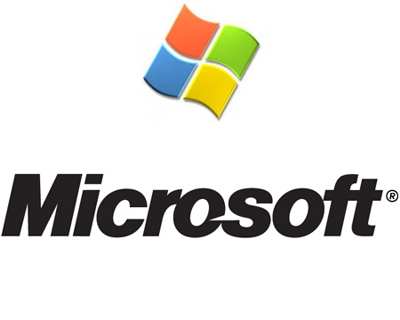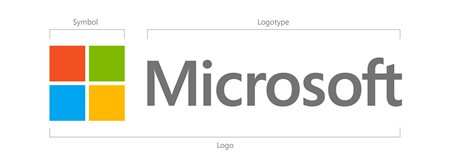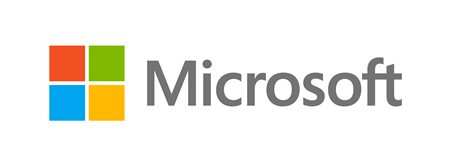| A New Microsoft Logo - Sign Of The Times |
| Written by Mike James |
| Friday, 24 August 2012 |
|
Or is it a sign for the times? It all depends on your outlook and where you are positioned in the Microsoft ecosystem. Microsoft seems to have embraced design and style but rejected sound engineering principles. It took 25 years to think that it might be time to replace the Microsoft logo - that's it just below in case you have already forgotten what it looks like:
It is a bit clunky but it is also very geeky in a way that is difficult to explain. The 3D effect on the flag and the gimmicky font seem to be what the new style is trying to get rid of. It still looks ok to me. Perhaps it's just nostalgia. It doesn't really matter what you think of the original logo it's the fact that it is NOW that the powers in Microsoft have decided it is time to change it - not last year, or the year before or... Well you get the idea. Has Microsoft so much time on its hands that it can afford to spend time designing a new logo? Has it no new challenges? While it is struggling to bring Windows 8 and a complete new operating environment online not to mention the complete revamp of Windows Phone it has time to contemplate the style of its new logo. This is a sign of the times.
The new logo is colorful and you might ask why it isn't as overall gray as the Visual Studio interfaces we developers have to put up with? But essentially we have the Microsoft name spelled out in a standard font and a square of colors. It basically panders to the elitist and laughable attitude that typography is the highest form of design. Hmmmm - how long could this have taken to design? The logo is bland and flat and seems to really want to disappear into the background. The new style seems to be nothing more than a rejection of the characteristics of the old style - which is a good metaphor for what Microsoft is doing generally. This is clearly what "re-imagining" means at Microsoft. Why now exactly? The leader in the market place for mobile is Apple and what is Apple known for - style. Microsot's simple minded approach to taking back the territory that it thinks belongs to it is to get with style. Steve Ballmer may once have said "developers, developers, developers", but today he would probably replace developer with that other "d" word - designer. Is this a bad thing? Probably because Apple didn't get where it is today just by doing style better. It had a product that was right for the market and right for the moment. Microsoft on the other hand really doesn't seem to get the need for design to be a secondary issue after the logic of the engineering and most importantly after the usability considerations have been met. Even Golgafrinchans recognized the fact that the wheel had to be round before they started arguing about what color it should be. My guess is that Microsoft's designers would have had it rendered in shades of grey and it would be very, very flat. You can argue that WinRT is good engineering; you can argue that Windows Phone 8 is good engineering - but it is bad engineering to throw so much away and start over simply because of office politics or a matter of style. Why did Microsoft invent WinRT and the UI formerly known as Metro? It already had a tablet operating system; it already had a phone operating system; and it had a really sophisticated UI construction kit in the form of WPF/Sliverlight and XAML. You can't even argue that WinRT is a step in the right direction; its UI is a mess that doesn't even fit the mobile platform and it certainly doesn't fit with the desktop platform. I have outlined the complaints before and lots of other people have pointed them out - but the simplest criticism is to note that Windows 8 and Windows RT are being developed into operating systems that focus on consumption not production. Consuming information is fine on a mobile device - but when it comes to creating new content then a desktop machine is needed, and the last thing you need is a desktop forced to pretend to be a tablet or a mobile phone. If you don't believe me try giving Windows 8 to a completely non-technical Windows 7 user and watch the confused and befuddled response. What is this start screen for again? Where's the desktop? How do I get from the desktop back to that start screen? Can I get my mail in an overlapping window so that I can see it and my office document at the same time? What are these things that keep appearing at the edge. Yes I know that given time you can learn to love anything, but this is a phone operating system forced onto the desktop. The content producer gets nothing out of the deal. What really indicates that Microsoft is more about style than function is that the solution to the spit personality problem is so simple it hardly needs inventing - put the new start screen into an overlappable standard Window and let the user switch it on or off according to the context. Then everyone would be, more or less, happy. I have been a Microsoft developer for a long time and what Microsoft is doing at the moment makes me want to defect - and I would if there was a better place to defect to. The problem is that Apple is a closed, over controlled, claustrophobic environment for a programmer. Yes you can survive, and you can make some money, but only if you sign up for a complete handing over of control of what you are doing. Of course, if you don't pull on the lead you probably won't notice it is there - until they change the rules. Creating an iOS app is a pact with the devil. Microsoft isn't only mimicking Apple in terms of its belief in style as the solution to every problem, it is also following in terms of a closed environment. Now when I try to write even the simplest program under Windows 8, I have to apply for a developer license - which admittedly at the moment is automatically granted as long as you have a Windows Live account. Microsoft has restricted things to make it difficult for you to run anything but IE10 as the WinRT browser and now it appears that you can't create alternative development tools for it either - it's Visual Studio or nothing. This is not claustrophobic - its hermetically sealed. If you want a relatively open, not perfect, but mass market for your applications then there really is only Android, but there is no desktop OS that satisfies these conditions any more. (And don't say I'm missing Linux - mass market is one of the conditions.) For this simple reason, Windows 7 is going to be around for some time. It is, as others have commented, likely to become the new Windows XP in terms of the overall resistance to upgrade. With my I Programmer colleagues, I'm working on more than one WinRT app and a book on the subject and yet there is a very large part of me that not only believes that Windows 8 will fail, but that it would be a good thing for the programming ecosystem if it did. So welcome re-imagined but boringly flat Microsoft logo:
I hope there is a company for you to represent in another 25 years.
More InformationRelated ArticlesWindows 8 Release Preview - Marriage of Inconvenience Windows 8: A Frankenstein Monster Three Windows 8 Editions Clarify the WinRT Position How Microsoft Could Have Done Metro
Comments
or email your comment to: comments@i-programmer.info
To be informed about new articles on I Programmer, install the I Programmer Toolbar, subscribe to the RSS feed, follow us on, Twitter, Facebook, Google+ or Linkedin, or sign up for our weekly newsletter. |
| Last Updated ( Saturday, 25 August 2012 ) |




